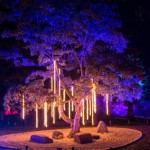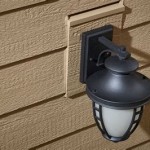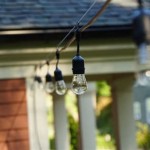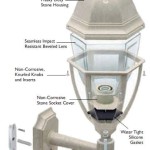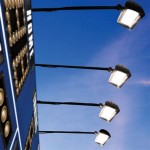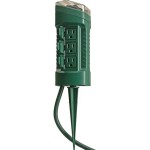```html
Photography Outdoor Lighting Techniques
Outdoor photography presents unique challenges and opportunities compared to studio environments. The primary light source, the sun, is dynamic and unpredictable, requiring photographers to develop a strong understanding of natural light and how to manipulate it to achieve desired results. Mastering outdoor lighting techniques involves understanding the properties of light, recognizing its impact on subjects, and employing strategies to enhance or modify the available illumination.
This article explores key outdoor lighting techniques, focusing on how to make the most of natural light in various conditions. It delves into understanding different types of light, using reflectors and diffusers, and employing techniques to mitigate harsh shadows and create flattering portraits. Proficiency in these techniques elevates outdoor photography, allowing photographers to capture compelling images regardless of the prevailing weather and time of day.
Understanding the Characteristics of Natural Light
Natural light is not a uniform entity. Its appearance and properties vary significantly depending on the time of day, weather conditions, and geographical location. Recognizing these variations is crucial for anticipating how light will affect a subject and planning accordingly.
The “golden hour,” occurring shortly after sunrise and before sunset, is often lauded for its warm, soft light. The sun’s angle is low, casting long shadows and creating a gentle, diffused illumination that is flattering to skin tones and textures. This light is ideal for portraits, landscapes, and any subject benefiting from a warm, inviting atmosphere.
Conversely, midday sun presents a different set of challenges. When the sun is directly overhead, it produces harsh, direct light that can create deep shadows under the eyes, nose, and chin. This type of light can wash out colors and create unwanted highlights. To mitigate these effects, photographers can seek shade, use reflectors to bounce light into shadowed areas, or wait for the light to soften as the sun begins to descend.
Overcast days provide another distinct lighting scenario. Clouds act as a natural diffuser, scattering sunlight and creating a soft, even illumination. This light is excellent for capturing details and textures, as it minimizes harsh shadows and highlights. Overcast light is often favored for portraiture, as it produces a flattering, shadowless effect. However, overcast skies can also lead to flat, uninteresting images if not handled carefully. Look for areas where the light is still directional, perhaps where a break in the clouds allows a small amount of direct light to illuminate the subject, or use reflectors to add a touch of brightness.
Understanding the color temperature of light is also critical. Color temperature is measured in Kelvin (K) and describes the warmth or coolness of the light. Golden hour light typically has a lower color temperature (around 2700-3000K), appearing warm and yellowish. Midday sun has a higher color temperature (around 5000-6500K), appearing cooler and bluer. Adjusting camera settings, such as white balance, is essential to accurately capture the colors in a scene and maintain a natural appearance.
Utilizing Reflectors and Diffusers
Reflectors and diffusers are indispensable tools for manipulating natural light. They allow photographers to control the intensity and direction of light, create softer shadows, and add highlights to subjects. These tools are particularly useful when dealing with harsh or uneven lighting conditions.
Reflectors are used to bounce light onto a subject, filling in shadows and adding brightness. They come in various sizes and colors, each producing a different effect. White reflectors provide a neutral, natural-looking fill light. Silver reflectors offer a brighter, more specular reflection, adding more contrast and punch to an image. Gold reflectors produce a warm, golden light, ideal for adding warmth to skin tones during cooler times of the day. Black reflectors, also known as flags, are used to block light, creating deeper shadows and controlling unwanted reflections.
The placement of a reflector is crucial for achieving the desired effect. Generally, the reflector should be positioned opposite the light source, angled to bounce light onto the shadowed areas of the subject. Experimenting with different angles and distances is essential to find the optimal position that creates the most flattering and natural-looking light.
Diffusers are used to soften harsh light and reduce contrast. They are typically made of translucent material that scatters light, creating a softer, more even illumination. Diffusers are particularly useful when shooting in direct sunlight, as they can prevent harsh shadows and create a more pleasing effect. Large diffusers can be placed between the sun and the subject to diffuse the direct sunlight, while smaller diffusers can be used to soften the light from a reflector.
Pop-up reflectors, which often include a reversible cover with surfaces like white, silver, gold, and black, offer versatility for different lighting situations. These are an affordable and portable solution for many outdoor photography scenarios.
Techniques for Mitigating Harsh Shadows and Creating Flattering Portraits
Harsh shadows can detract from the overall quality of an outdoor photograph, particularly in portraiture. Developing techniques to mitigate these shadows and create flattering portraits is essential for successful outdoor photography.
One of the most effective ways to avoid harsh shadows is to choose the right time of day to shoot. As mentioned earlier, the golden hour provides soft, diffused light that minimizes shadows. Shooting during overcast days also produces a similar effect.
If shooting in direct sunlight is unavoidable, consider positioning the subject in a shaded area. The shade will block the direct sunlight, creating a softer, more even illumination. However, be mindful of the background. If the background is significantly brighter than the subject, it can be distracting. In this case, use a reflector to add light to the subject's face and balance the exposure.
Using fill flash is another technique for mitigating harsh shadows. A fill flash fires a small amount of artificial light to fill in the shadows and reduce the contrast between the highlights and shadows. The flash should be used subtly, as an overly bright flash can create an unnatural and unflattering effect. Adjust the flash power to achieve a balanced exposure. Many modern cameras offer TTL (Through-The-Lens) flash metering, which automatically adjusts the flash power for optimal results.
Posing the subject strategically can also help minimize harsh shadows. Avoid positioning the subject with their face directly facing the sun, as this can create unflattering shadows under the eyes and nose. Instead, have the subject turn their face slightly away from the sun, or position them so that the light is coming from the side. Consider using a slight upward angle when photographing subjects in bright light; this can sometimes help soften shadows under the eyes.
Finally, post-processing can be used to further refine the lighting and reduce harsh shadows. Using software like Adobe Lightroom or Photoshop, photographers can adjust the shadows and highlights, reduce contrast, and selectively brighten or darken areas of the image to create a more balanced and flattering result.
```
How To Mix Ambient Light And Fill Flash For Outdoor Portraits

Creative Lighting Techniques For Portrait Photographers Rangefinder

Pin By David Casimer On Photography Ideas Lighting Setup Portrait Studio

Essential Lighting Tips For Outdoor Photography Lessons Skills

11 Outdoor Portrait Photography Tips For Easy Shots

Westcott University Real Deal Review Quick Portraits With The Rapid Box Duo Studio Photography Lighting Portrait Setup Techniques

Natural Light Photography Tutorial For Beginners With Diagrams

Off Flash 5 Techniques For Dramatic Portraits Rangefinder

Professional S Guide To Landscape Lighting Photography

Applying The 3 Light Studio Setup To Outdoor Portraits

